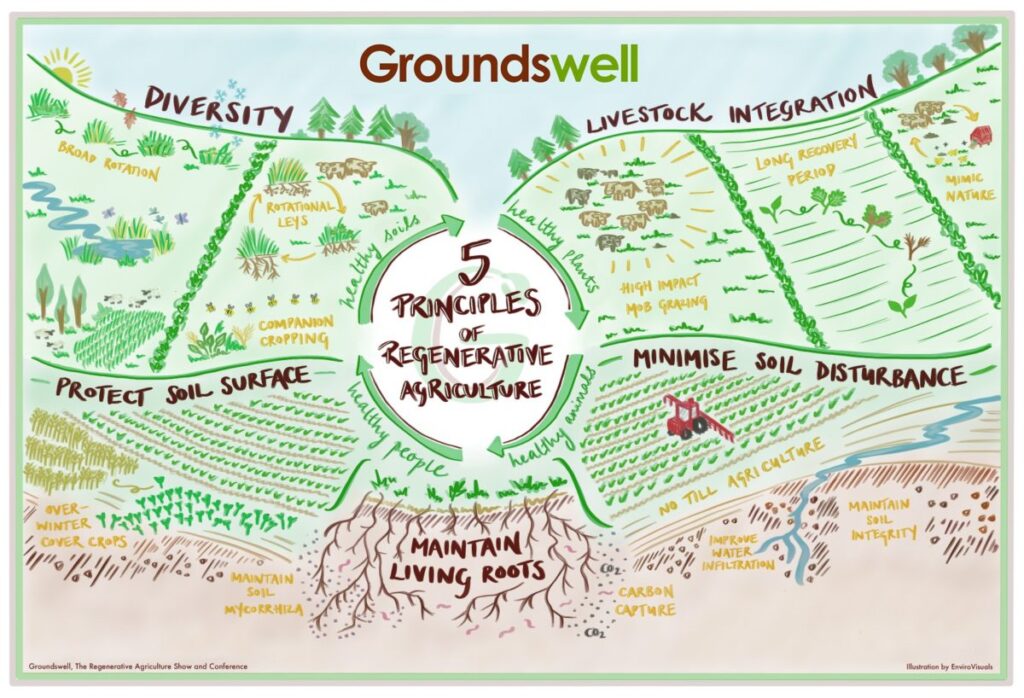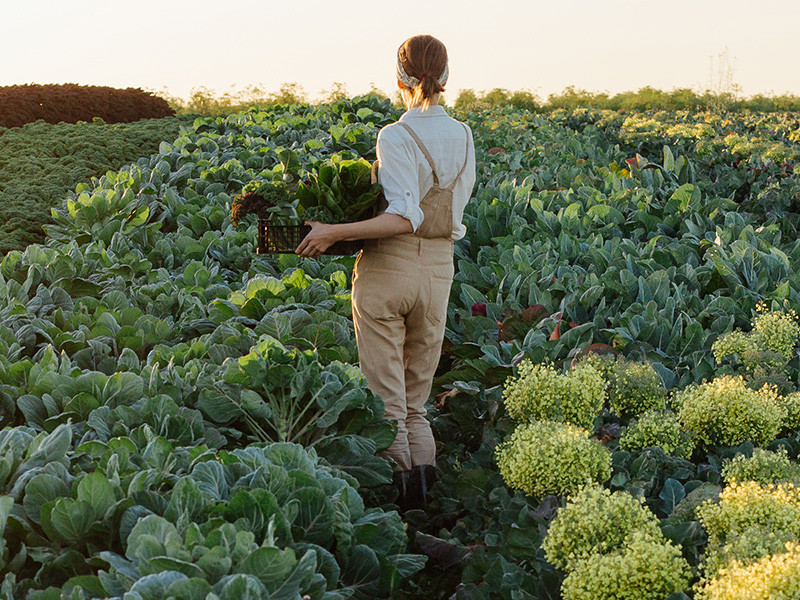Nội dung
In the quest for a sustainable and resilient food future, regenerative agriculture emerges as a beacon of hope in 2024. As the adverse effects of conventional farming practices become increasingly evident, the need for transformative solutions has never been more pressing.
Regenerative agriculture represents a holistic approach that goes beyond mere sustainability, offering a promising paradigm shift in the way we cultivate and harvest our food. By focusing on soil health, biodiversity, and ecological balance, regenerative agriculture not only addresses pressing environmental concerns but also fosters a more sustainable and resilient food system.
As we navigate the challenges of the future, the principles of regenerative agriculture stand poised to revolutionize our approach to farming, ensuring a healthier planet and more secure food sources for generations to come.
1. Restoring Soil Health
At the heart of regenerative agriculture lies a profound commitment to soil health. Conventional farming practices, characterized by intensive tilling and the use of synthetic fertilizers and pesticides, have led to soil degradation, erosion, and loss of biodiversity. In contrast, regenerative practices prioritize soil health through techniques such as cover cropping, rotational grazing, and minimal tillage. By nurturing the soil, regenerative agriculture enhances its ability to sequester carbon, retain water, and support diverse microbial life.
2. Carbon Sequestration and Climate Mitigation
Regenerative agriculture stands as a powerful ally in the fight against climate change. The practices employed in this approach contribute to carbon sequestration, pulling carbon dioxide from the atmosphere and storing it in the soil. Cover crops and diverse plantings increase biomass, while reduced tillage prevents carbon release. By harnessing these mechanisms, regenerative agriculture acts as a natural climate solution, mitigating the impact of greenhouse gas emissions and fostering climate-resilient food systems.
3. Biodiversity Conservation
Conventional agriculture often leads to monoculture landscapes, where large swaths of land are dedicated to a single crop. This practice comes at the expense of biodiversity, as it disrupts ecosystems and diminishes the variety of plant and animal species. Regenerative agriculture, on the other hand, encourages the coexistence of diverse crops and promotes natural habitats. This diversity not only strengthens the resilience of agricultural systems but also provides a haven for beneficial insects, birds, and other wildlife essential for ecosystem balance.
4. Water Conservation
Water scarcity is a critical global challenge, exacerbated by unsustainable agricultural practices. Regenerative agriculture adopts water-wise techniques such as rainwater harvesting, cover cropping, and improved soil structure. These practices enhance water retention, reduce runoff, and promote efficient water use, contributing to the conservation of this precious resource.
5. Economic Resilience for Farmers
Regenerative agriculture is not only environmentally sustainable but also economically beneficial for farmers. By improving soil health and reducing reliance on external inputs, farmers can experience increased yields and reduced production costs over time. Additionally, the diverse and resilient ecosystems fostered by regenerative practices are better equipped to withstand external shocks, providing a buffer against the uncertainties of climate change and market fluctuations.
Five Inspiring Examples of Regenerative Farming Practices in the USA
Regenerative farming has emerged as a beacon of hope for sustainable agriculture, aiming not just to sustain the land but to enhance it over time. In the United States, a growing number of farmers are adopting regenerative practices to promote soil health, biodiversity, and long-term ecological resilience. Here, we explore five inspiring examples of regenerative farming practices across the country.
Holistic Grazing Management
In the heart of the Midwest, ranchers are redefining the way livestock is managed through holistic grazing practices. By mimicking the natural movement patterns of wild herds, farmers rotate their livestock through carefully planned paddocks. This approach prevents overgrazing, allows for natural fertilization, and promotes healthier pastures. The result is not only better-quality meat but also improved soil structure and increased carbon sequestration.
Cover Cropping and Crop Rotation
In the fertile plains of Iowa, some farmers are embracing cover cropping and diversified crop rotations to break the monoculture cycle. Planting cover crops, such as legumes and grasses, between cash crops helps prevent soil erosion, suppress weeds, and enhance soil fertility. Additionally, rotating crops disrupts pest and disease cycles, reducing the need for synthetic inputs. This approach not only improves soil health but also fosters resilience in the face of changing environmental conditions.
Agroforestry Integration
On the West Coast, particularly in California’s Central Valley, farmers are integrating agroforestry into their operations. By planting trees alongside traditional crops, they create a diverse ecosystem that benefits both the soil and the crops. The trees provide shade, prevent water runoff, and enhance biodiversity. This innovative approach not only improves the overall farm ecosystem but also contributes to carbon sequestration, mitigating the impacts of climate change.
No-Till Farming
In the expansive fields of the Great Plains, some farmers are transitioning to no-till or minimal tillage practices. Traditional plowing can disrupt soil structure and contribute to erosion. No-till farming, on the other hand, leaves the soil largely undisturbed, preserving its natural composition. This method helps retain moisture, reduces the need for irrigation, and enhances the soil’s capacity to sequester carbon. It’s a win-win for farmers and the environment.
Regenerative Orchards and Vineyards
In the scenic landscapes of Oregon and Washington, fruit and wine producers are pioneering regenerative practices in orchards and vineyards. By incorporating cover crops, reducing synthetic inputs, and enhancing biodiversity, these farmers are not only producing high-quality fruits but also building resilience against pests and diseases. The integration of livestock into orchards adds another layer of sustainability, as animals contribute to nutrient cycling and soil health.
Conclusion for regenerative agriculture 2024 trends
The landscape of regenerative agriculture in 2024 represents a transformative force that extends far beyond the fields and farms. It stands as a beacon of hope for a future where food production is not only abundant but also ecologically responsible. The emphasis on soil health, climate mitigation, biodiversity conservation, and economic resilience for farmers underscores the holistic nature of regenerative practices. As we navigate the complexities of a changing world, embracing regenerative agriculture is not merely a choice; it is an imperative. It is a commitment to nurturing our planet, fostering sustainability, and ensuring a bountiful harvest for generations to come. In the tapestry of our agricultural future, regenerative practices weave a story of resilience and regeneration—a story that is crucial for the well-being of our planet and the prosperity of humanity.





